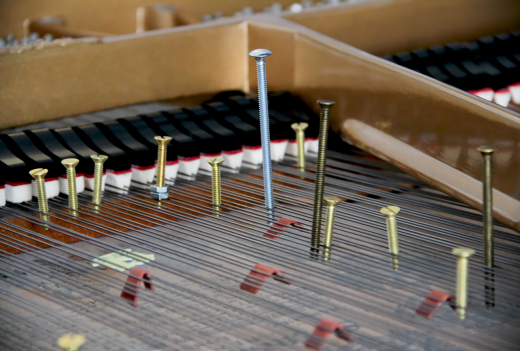All kinds of composers have tried to create new and remarkable sounds on a piano, by laying objects on top of the strings, or by attaching things to the string. A well known pioneer in this field is John Cage who wrote several pieces for the so-called ‘prepared piano’. Beer caps, clothes pins and pieces of newspaper page; all kinds of stuff has been used to change te sound of piano’s. Honestly l must admit that it was very seldom that l had the idea that an effect was created that really added something meaningful to the expressiveness of the music. At it’s best it seemed like a quirky sound that could work if you recorded it with, say, a sampler and did some serious work on it. And most of the time l thought: why not just use a synthesizer? With the amazing developments in electronic synthesis this prepared piano seems not much more than a poor-man’s synthesizer.
But it is in fact possible to make sounds with a piano that are very remarkable, without adding other objects to it. You don’t need clothes pins to create something special with a piano. You can just use ‘au naturel’ and just the way it is. By damping a string with your fingertip, for example, you can make a very sinster sound which has a real instant emotional charge. lt makes for a very strong atmosphere. lt is a technique l learnt from jazz-pianoplayer Mike del Ferro.

Then there is the so-called ‘forearm-technique’, which allows you to make use of the overtones of the middle register of the piano, and create a natural reverb that works wonders in atmosferical, scenic music.
There are more techniques in this particular niche of the world of piano, and l shall certainly talk about them in future vlogs and blogs. But for now these two tricks will do.
See the detailed explanation on these three special piano techniques in my vlog:
The Moon’s Tunes are available at: https://mikebodde.nl/product/mike-bodde-the-moons-tunes-pdf/
